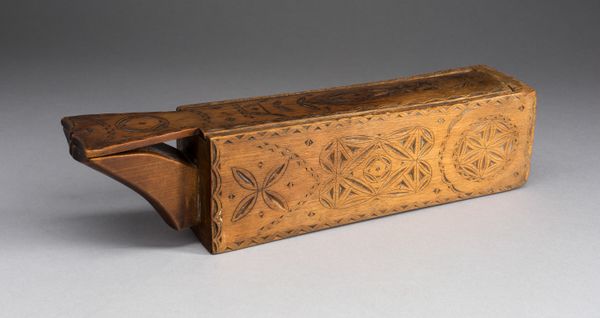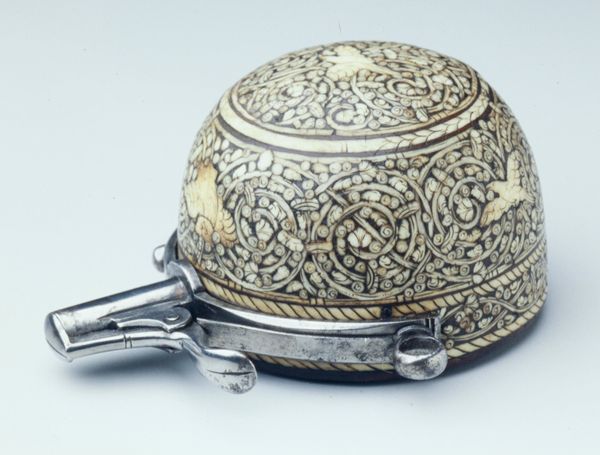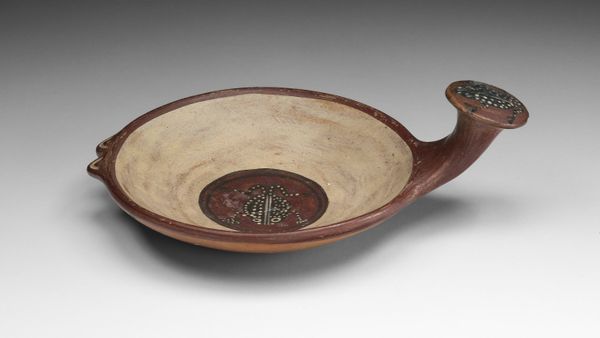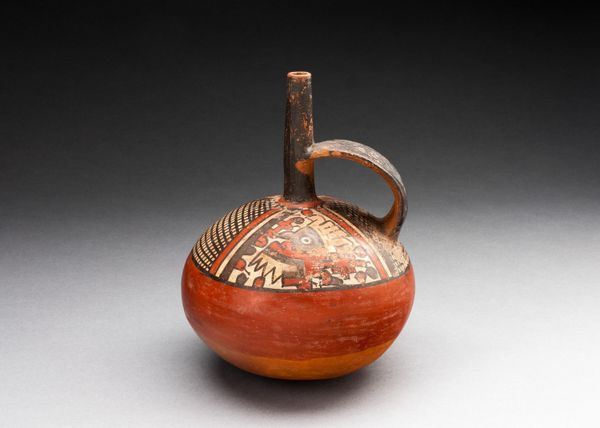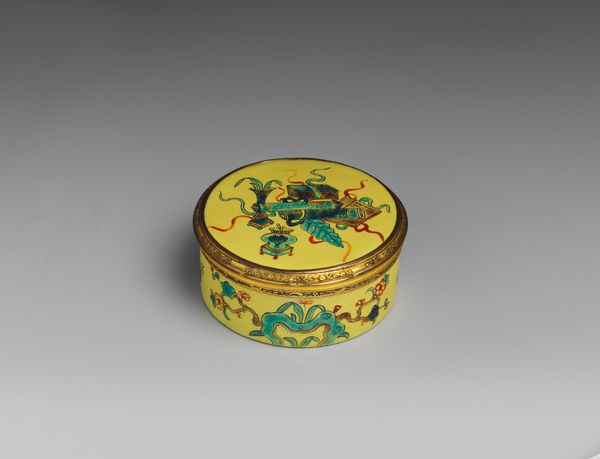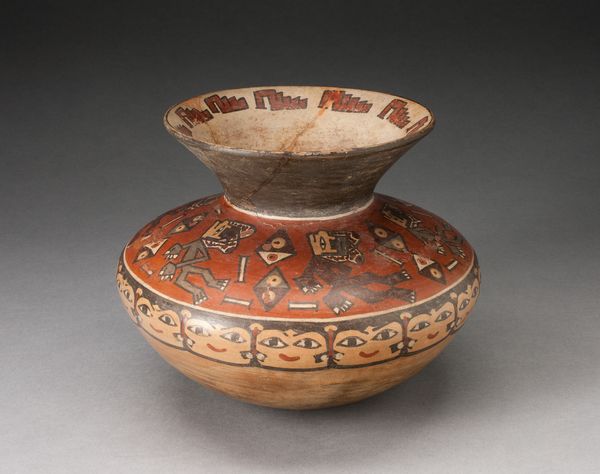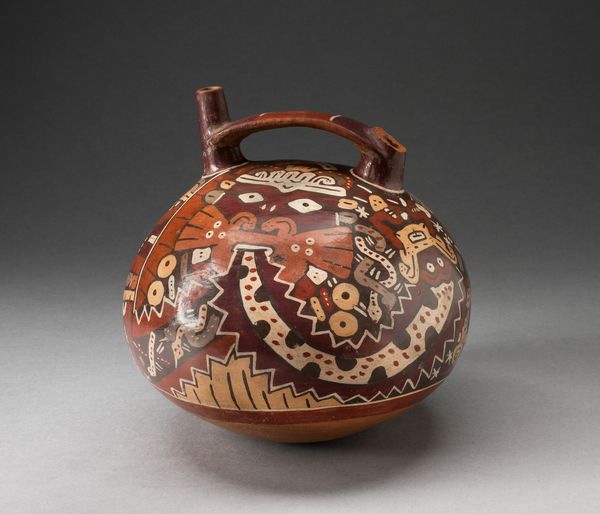
carving, ceramic, ink, earthenware
#
carving
#
asian-art
#
ceramic
#
ink
#
earthenware
#
stoneware
#
orientalism
#
decorative-art
Dimensions: 1 3/8 x 4 13/16 in. (3.5 x 12.22 cm)
Copyright: Public Domain
This inkstone and fitted box, by Lu T’ung, would have been part of a Chinese scholar’s studio, a space for contemplation and artistic practice. The fitted box is meticulously adorned with floral and vegetal designs, each element carrying symbolic weight. The peaches and other fruits symbolize longevity and prosperity, reflecting values deeply embedded in Chinese culture. Inkstones were not merely utilitarian objects, but rather, they were intimate tools in the cultivation of self-expression and intellectual pursuits. The grinding of ink was a meditative act that allowed the scholar to prepare themselves mentally and emotionally for the task of writing or painting. The red lacquer, so characteristic of Chinese decorative arts, adds a layer of cultural identity to the piece. Red symbolizes luck and happiness, further imbuing the inkstone with layers of meaning. In its beauty, the inkstone invites us to reflect on the connection between the material world and the inner life of the scholar, as it bridges the gap between aesthetic pleasure and intellectual discipline.
Comments
minneapolisinstituteofart almost 2 years ago
⋮
One of the more unusual uses of lacquer during Ming and Qing was the production of inkstones. This circular stone has the right texture and porosity to make a good grinding utensil yet it is lighter and easier to carry than a stone or ceramic version. The circular cover of the fitted box is decorated with the "filled-in and engraved-gold" technique (tianqi). It displays ginkgo leaves, longan berries, cherries, and lychee on top with a more formal lotus scroll motif decorating its side register. All of these auspicious plants are outlined in gold and the general style can be seen as a revival of the Wanli period (1573-1619). The bottom of the base bears the mark of Lu Tong, a late eighteenth-early nineteenth-century lacquer artist.
Join the conversation
Join millions of artists and users on Artera today and experience the ultimate creative platform.
